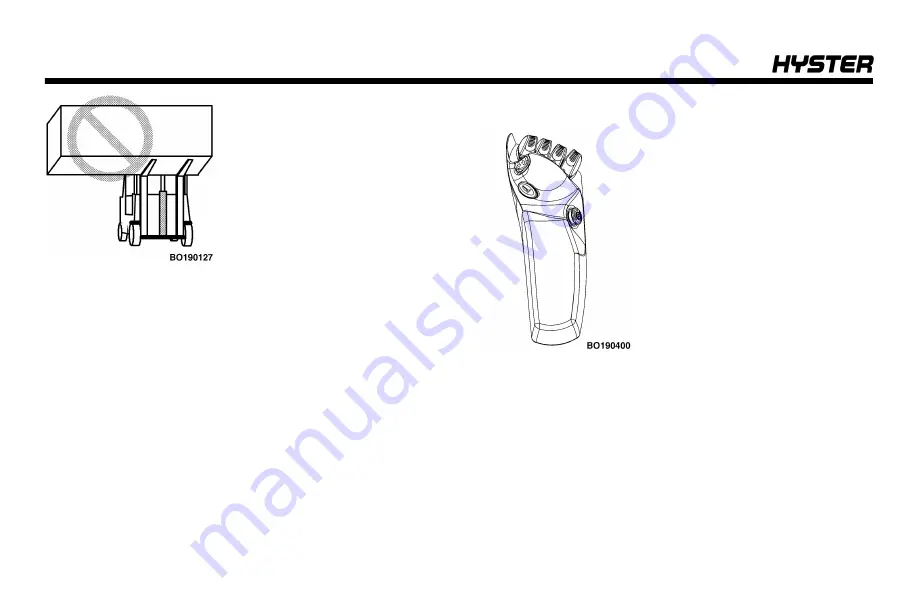
If the weight of the load is not
centered between the forks, the
load can fall from the forks when
you turn a corner or hit a bump.
An off center load will increase
the possibility of the truck tipping
over to the side. Verify the pins
that keep the forks in position
are engaged so that the forks
cannot move.
Lifting, Lowering, and Tilting
NOTE:
The lift trucks covered in this manual can be equip-
ped with either standard manual hydraulic levers or Electro-
Hydraulic (E-Hydraulic) mini-levers. See
,
, and
When possible, keep both hands on the steering wheel.
During most loading or unloading operations, the operator
steers with the left hand. The right hand is used to operate
the lift, tilt, and attachment controls.
The
LIFT
and
TILT
functions are controlled by separate
manual levers or optional mini-levers. See the
Model Description
section for the
correct operation.
The speed of the hydraulic func-
tions is controlled by the position
of the control levers. The farther
the manual hand lever or mini-
lever is moved from the
NEUTRAL
position, the faster the speed of
the hydraulic function.
Do not lift or hit anything that can
fall on the operator or a bystander.
Remember, a lift truck equipped
with a
Hyster
overhead guard and
load backrest extension provides
reasonable protection to the oper-
ator from falling objects, but cannot protect against every
possible impact.
Operating Procedures
118
Property of American Airlines

































